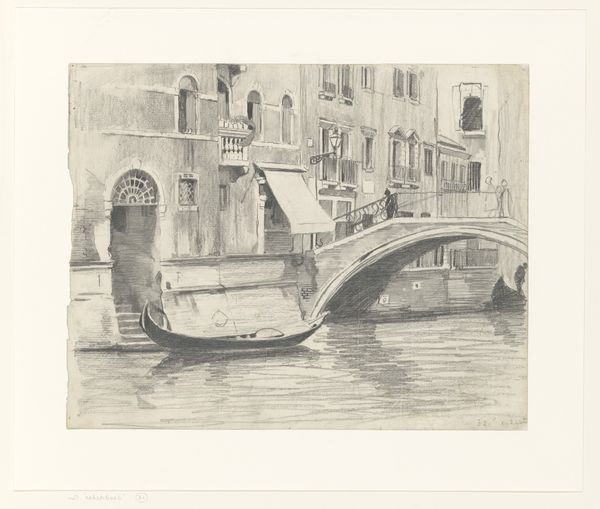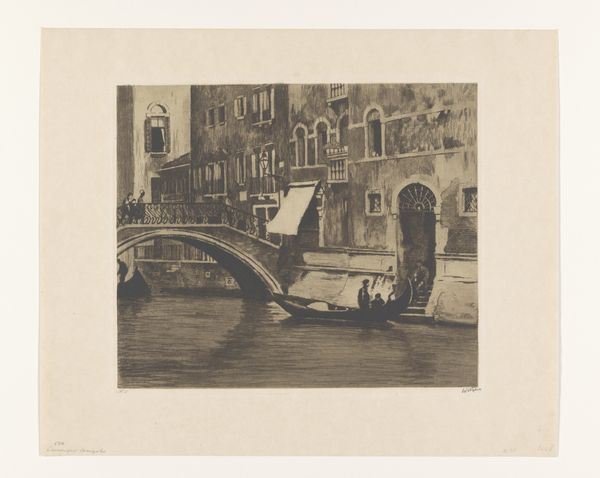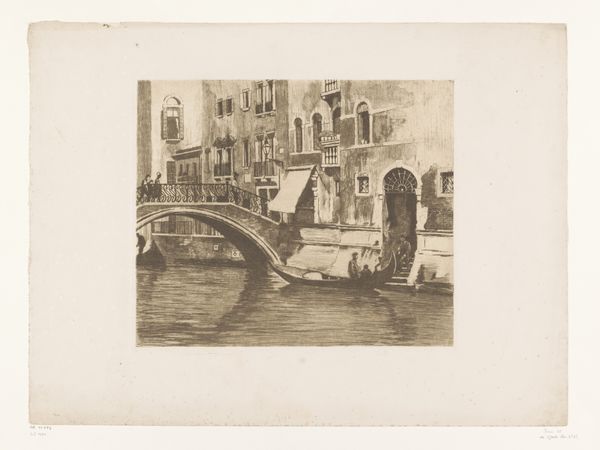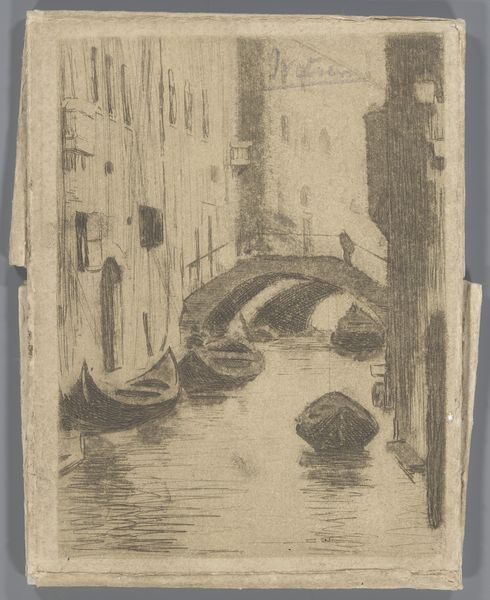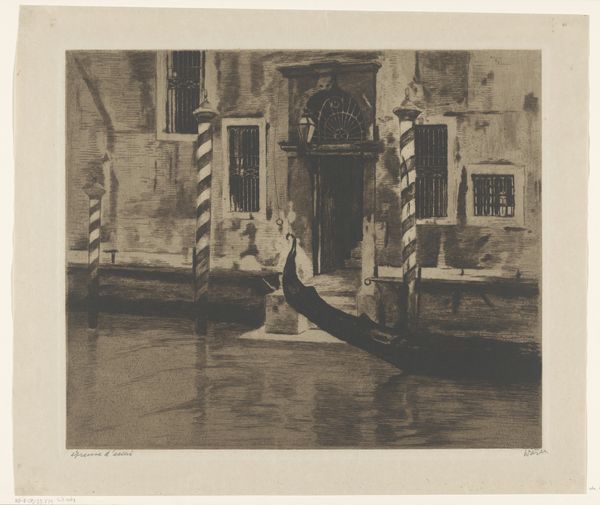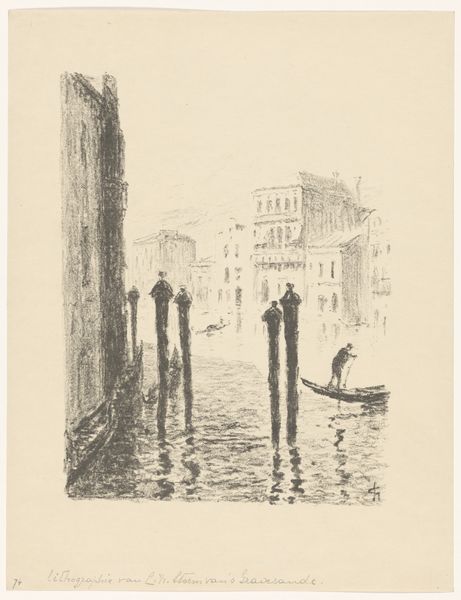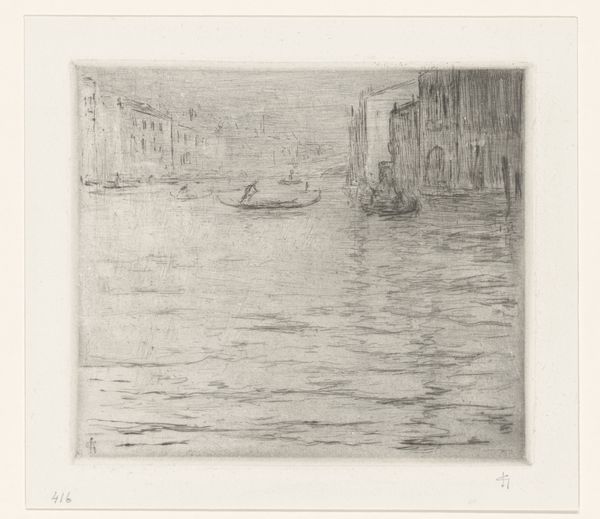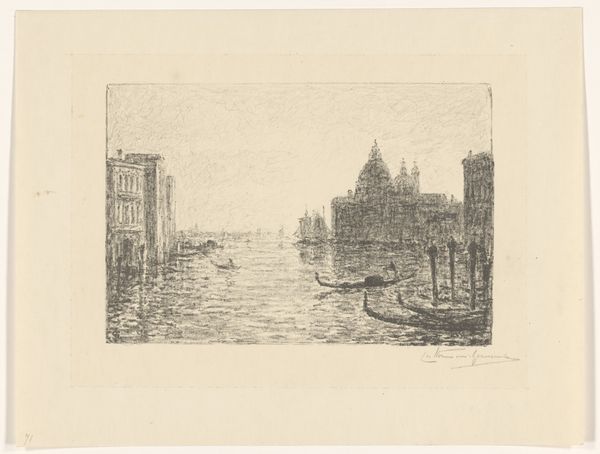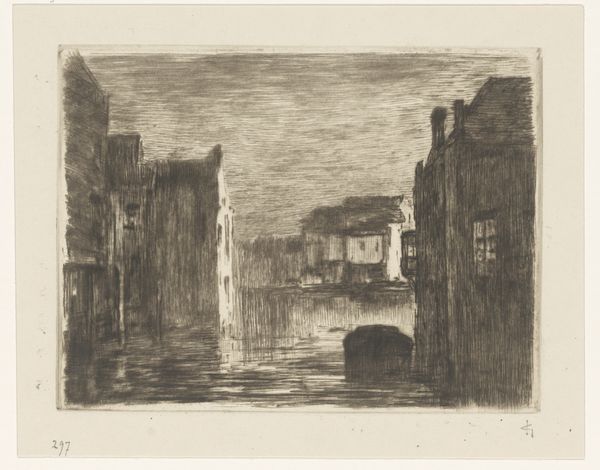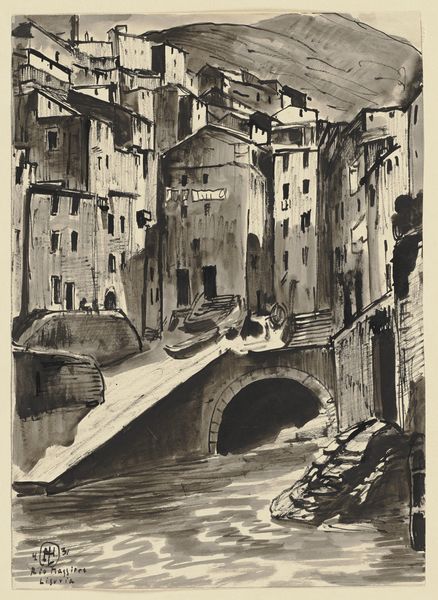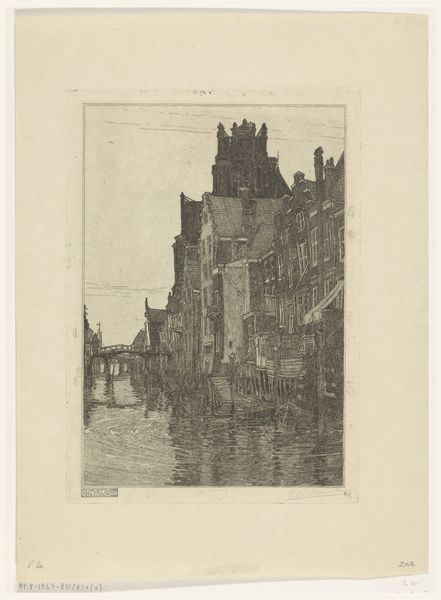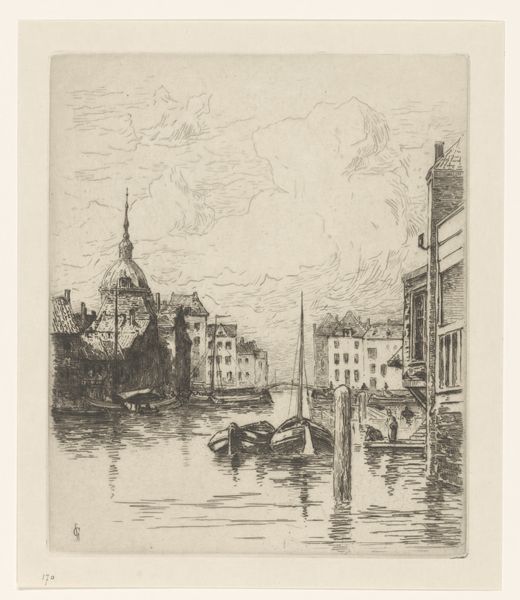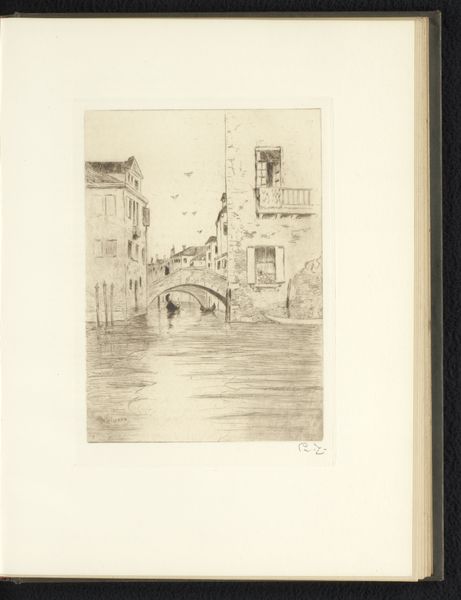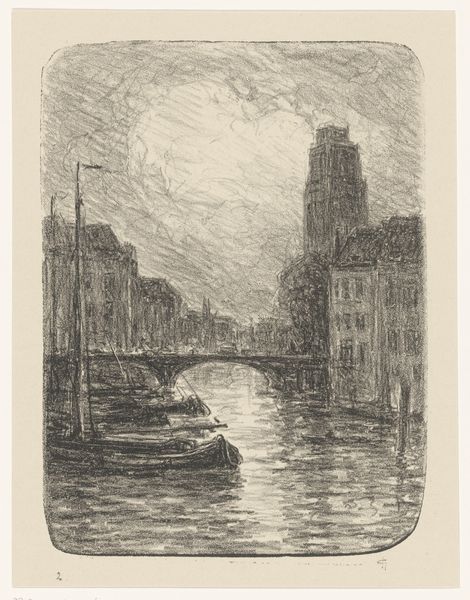
Dimensions: height 160 mm, width 121 mm
Copyright: Rijks Museum: Open Domain
Curator: Willem Witsen's "Bridge over the Rio di San Toma in Venice," created around 1914-1919, presents a fascinating slice of Venetian life, rendered in etching. Editor: There's a distinct stillness to it, wouldn't you say? Despite being a cityscape filled with implied movement, it feels paused, almost melancholic. The tight cropping intensifies the feeling of confinement. Curator: Indeed. Note how Witsen manipulates light and shadow. The dark, vertical strokes of the buildings and posts create a counterpoint to the brighter water, structuring the composition and focusing our attention on the bridge and gondolas. Editor: Gondolas! Of course, Venice is basically synonymous with the vessels. Here, they’re loaded with symbolism. Representing transit, movement, the ebb and flow of life… It seems also to underscore Venice as a historical link between East and West. Curator: I see what you mean. There's an ambiguity there too. Are they passing under the bridge or simply moored? This very indecisiveness destabilizes any singular reading. Moreover, consider the artist’s choice of etching; the texture builds a sense of depth and evokes a city in subtle decay. Editor: The decay gives it authenticity though, a resistance to the picturesque postcard image. The bridge becomes a symbol itself - linking past and present, land and water, humans and the environment in this city, quite literally bridging those divides. Curator: Precisely! A semiotic reading reveals much in terms of historical and cultural layering, doesn’t it? Its structural design focuses attention towards these particular points. Editor: Definitely. I leave this artwork now seeing Venice not only as a city of waterways, but as an accumulation of bridges—bridges that connect places, bridge time and bridge symbols. It seems full of unspoken histories, just under the surface of the water. Curator: Indeed. Its restrained execution reveals more about structure and semiotic relations. A quiet study.
Comments
No comments
Be the first to comment and join the conversation on the ultimate creative platform.
